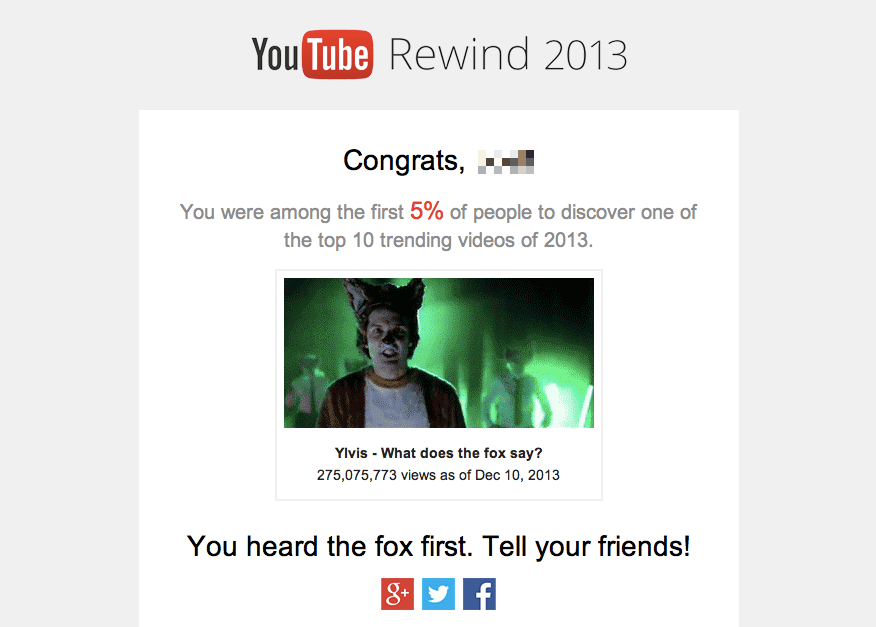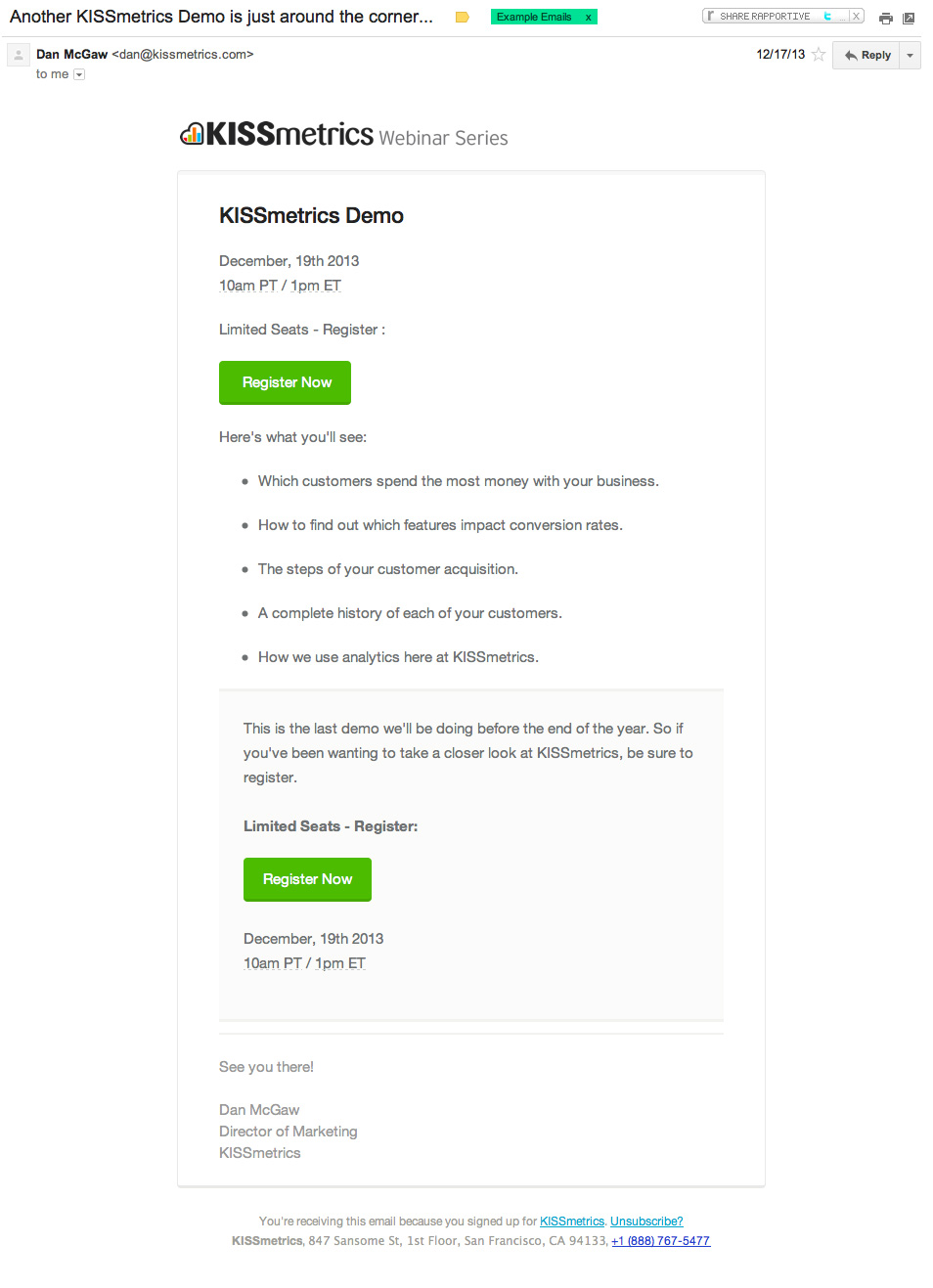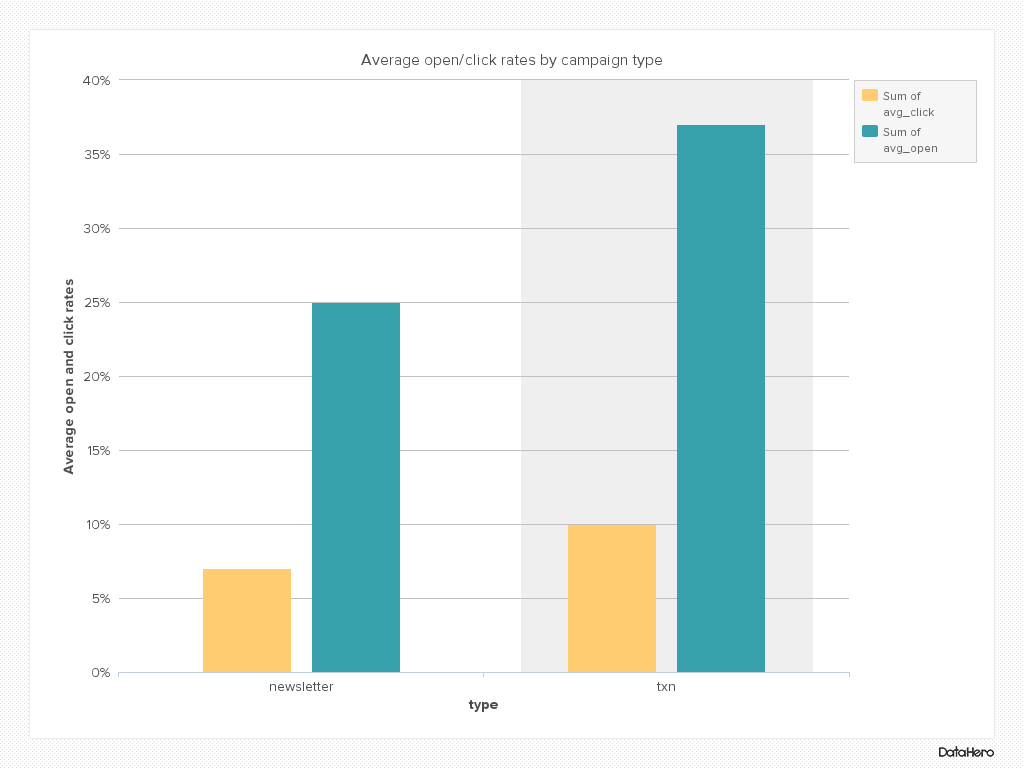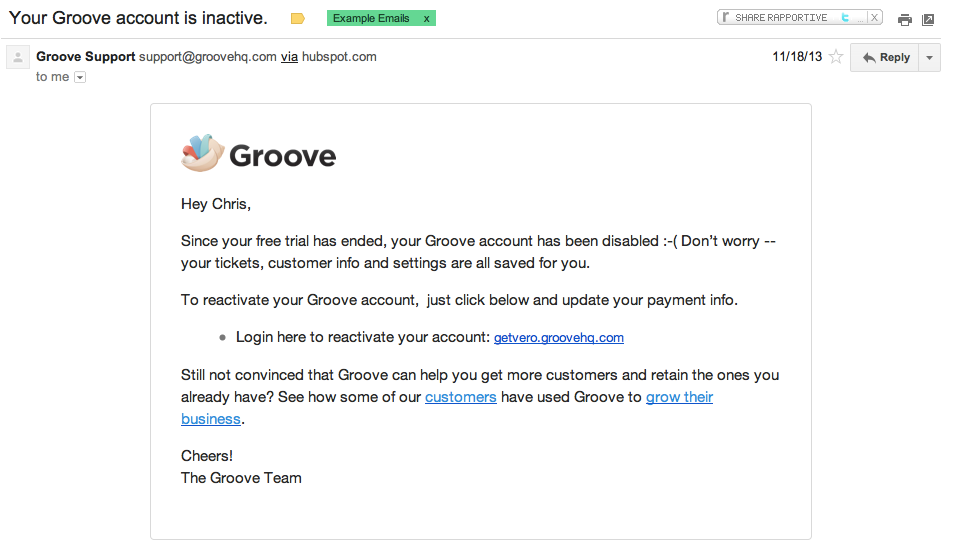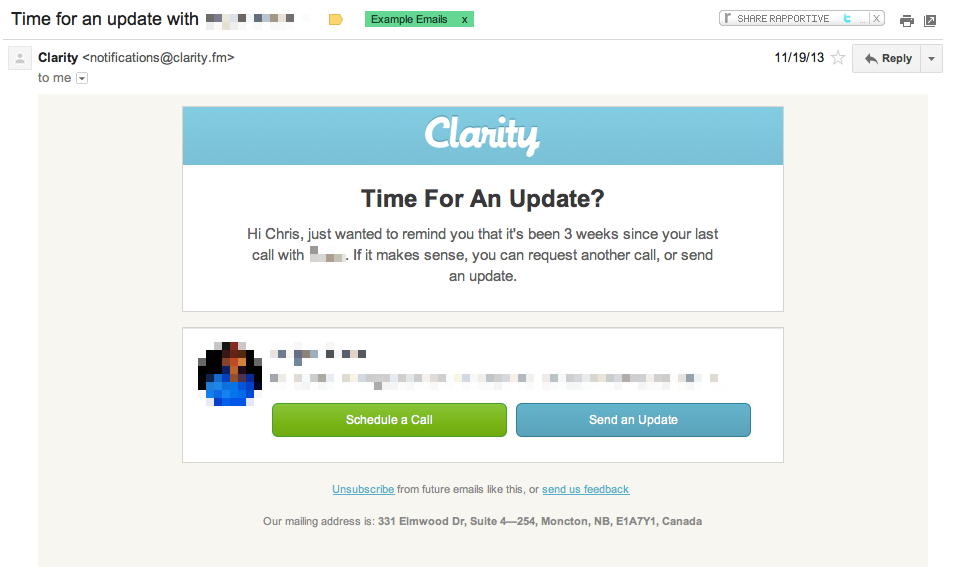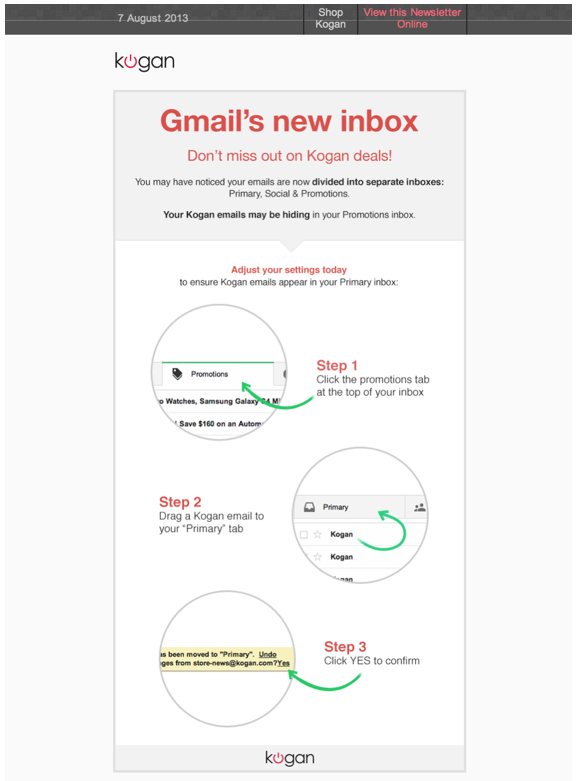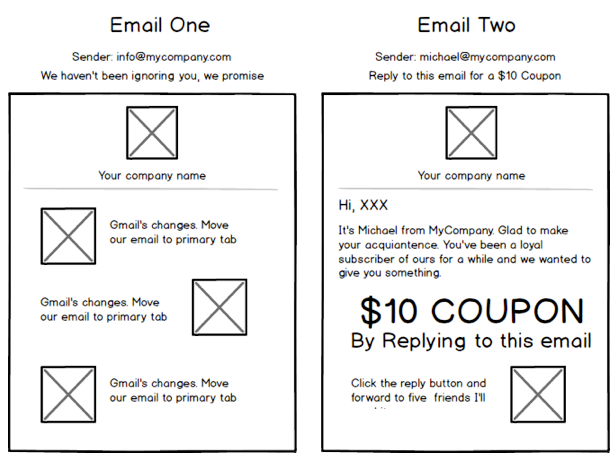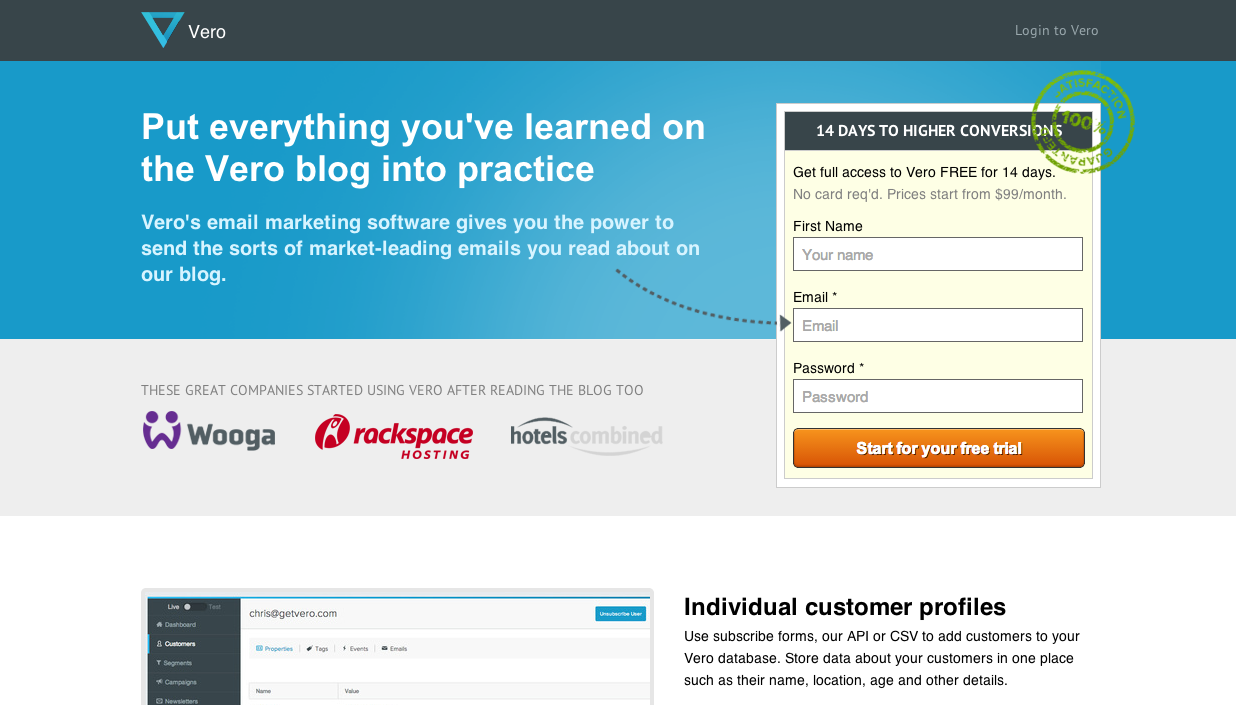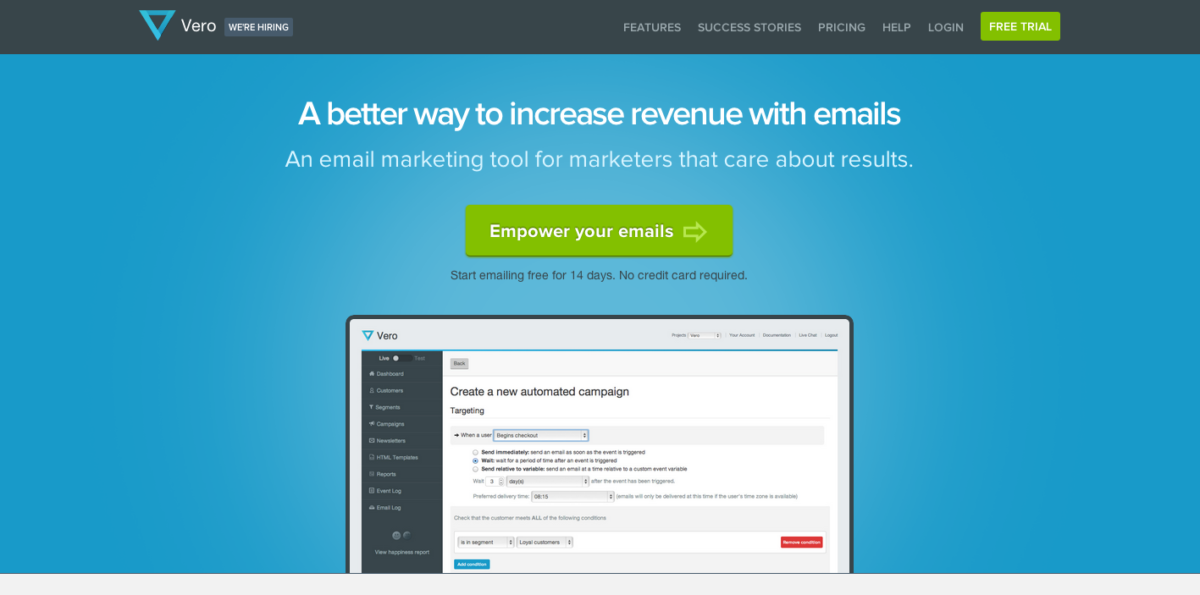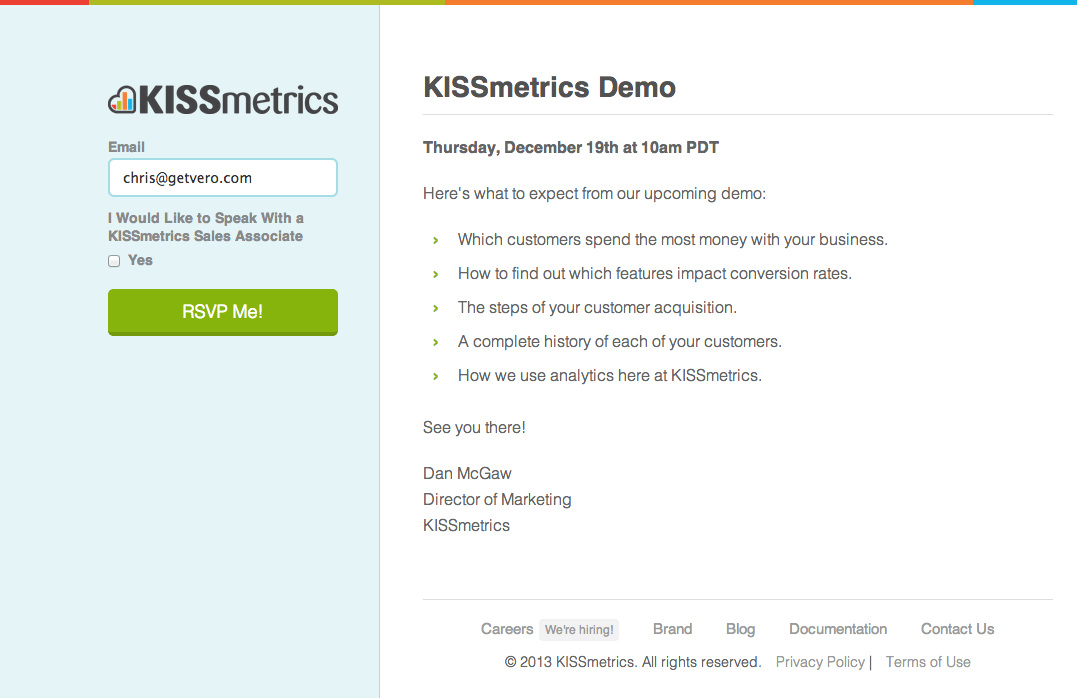
The 5 Deadly Sins Of Email Marketing
-
News and UpdatesUpdatedPosted:
On this page
Although there are many technical rules around you need to follow to ensure your emails look and function well, the rules around what to do to create successful email marketing campaigns are completely open: you can try out anything you like.
Finding what works is a process of trial and error but these 5 tips are definitely things you’ll want to avoid if you want your campaigns to be successful.
Without further ado, here are 5 things you don’t want to do in your email marketing campaigns if you are trying to ensure you rock it every time.
1. Distract your customer
The number one conversion killer when it comes to email marketing is distraction.
Elizabeth Yin, founder of LaunchBit, shared that there are, on average, 23.3 links in an email marketing newsletter.
That’s a lot of links.
The goal of nearly all email marketing campaigns is to get people to click through to your website.
Distraction is a psychological killer.
The team at LaunchBit broke down the frequency with which each link in a campaign is clicked.
They found that the first and second links in an email campaign are by far the most popular:
This data shows that your recipients’ focus is most definitely on the first and/or second call to action and drops off rapidly after that.
With this information in hand it’s pretty clear that you should focus on these two links and, while you’re at it, reduce the number of links down to one or two: that way the customers have no where else to click!
Putting it into action
Here are two campaigns that do have a very focused call to action.
Take the following clever email from YouTube.
Targeting customers that viewed one of the 10 top trending videos of 2013, YouTube used individual data to make customers feel special and drive re-engagement.
The goal of this email is to get the recipient to re-watch the video and share it with their friends after they remember how hilarious or entertaining it was.
The email has no links to other videos like the YouTube digests: it is singularly focused.
This campaign also uses the power of personalised data, an extremely effective tip for re-engaging customers using email marketing.
Another great example of a single CTA comes from KISSmetrics. The campaign below uses a new template that really highlights the call to action. In this particular email, they even repeat the button twice, once at the top and once at the bottom:
There’s nothing else you can do except register for the webinar using that nice, big green button: a perfect example of a singular CTA.
2. Missing out on opportunities by ignoring triggers
We recently pulled out a ton of data and found that there is no doubt that trigger-based campaigns get 40% more clicks than standard newsletters but many online businesses overlook the power of customer actions to drive new opportunities for email marketing:
The fact is, if you’re not using customer actions to trigger email campaigns then you’re missing out on a ton of marketing opportunities. Even more importantly they’re opportunities that have context and this is pure marketing gold.
Here’s a great example from Etihad. Flying international they send this email to customers flying economy:
If they weren’t using the actions of their customers (those booking a trip) and simply sent newsletters with regular offers or upgrades they’d be missing out on this contextual opportunity to market to all of their customers, all the time, automatically!
Another great example comes from Groove. A week after your trial expires, they send you an email letting you know that your account has been locked and that you can upgrade to unlock it.
The action-based nature gives Groove a campaign they can play with that consistently gets sent to customers that have abandoned their trial. This is a super-powerful marketing opportunity and gives them loads of room to test.
A final awesome example comes from Clarity.fm:
I love this example because it’s one of those rare email marketing campaigns that does a solid job at targeting customers with the aim of bringing them back for repeat business. In order to increase your customer lifetime value you can make massive headway by changing two key variables: average revenue per customer and lifetime. Increasing the number of times a customer returns to purchase will lift the lifetime they are a customer and, ideally, the average revenue per customer.
Putting it into action
Think about the actions your customers take. Determining the point in your customer lifecycle where there is a significant drop off is the best place to start planning your lifecycle emails.
Setup an automated campaign that aims to get customers to sign up, activate, re-engage or refer.
3. Not optimising deliverability
There are a lot of elements to deliverability: from you domain to your email volume to the number of images you use in your campaigns to the keywords in your email copy.
You likely already know about many of the basic rules such as “never buy an email marketing list”. Many of these are common sense but one new area of interest is Gmail’s ‘tabbed inbox’:
In 2013 Gmail began automatically classifying emails for customers automatically.
Moving your campaigns from your recipients’ Promotions tab to their Primary tab is something you should aim to do. Why? Mailchimp have shared statistics that outline the drop in open rates they’ve seen based on the introduction of Gmail’s tabs.
There are a number of approaches to getting emails into the Primary tab.
The most direct way is to ask customers to drag your email to the Primary tab.
Take this clear, effective example from Kogan:
If you’re going to do something like this then you should, of course, segment to customers’ whose email addresses end in ‘gmail.com’ or ‘googlemail.com’.
Don’t send it to all customers; many won’t have a clue what you’re talking about!
Another thing to focus on is the keywords you use in your campaign. Based on data from the Email Intelligence Report 2013, results show that certain keywords like ‘financial’ or ‘statement’ or ‘reply’ are virtually guaranteed to make the Primary inbox tab.
This makes a lot of practical sense, particularly when compared with words like ‘newsletter’ or ‘alert’ which are sent directly to Promotions or Updates.
A final, novel idea to get your emails in the Primary tab comes from Tzvi at Cartology.
Comparing email one and email two below, Tzvi sets up a situation that is designed to get customers responding to your ‘personal’ emails. The second campaign has a high engagement rate but a low CTR as it comes from an individual person and doesn’t have a click-through CTA. Taking an approach like this means there is a good chance you’ll end up in the Primary tab, at least for a while!
Actionable takeaway
There are two things you should do to maximise your customer face-time:
- Ensure you always follow the basic rules of email marketing. Use a permission-based listed, email consistently and with regular volume and focus on providing quality content in your emails that is relevant to your customers. Don’t give your recipients’ a reason to hit SPAM.
- Depending on your audience you can send an email asking customers to move your campaign(s) into the Gmail Primary tab or, if your audience is a little more tech-savvy, try Tzvi’s approach of altering your from email addresses and the CTA in some of your emails. Send some emails specifically from your CEO or Customer Success Manager; you should strive to make things personal.
3. Following the status quo
There are so many ‘best practices’ thrown around out there. Many are blindly accepted by marketers as gospel.
One of the best I have heard time-and-again over the last two years is “using a first name in your subject line doesn’t have an impact: people are immune to it now”.
Despite this ‘best practice’ belief, AWeber, a business with savvy email marketers for for an audience, A/B tested an email subject that included the customers’ first name vs. one that didn’t.
Email A: “Email Marketing Advice From 2 Guys (Who Know What They’re Doing)”
Email B: “[First Name], Email Marketing Advice From 2 Guys (Who Know What They’re Doing)”
This was just 12 months ago and the result they determined was that using the first name out-performed not using the first name by increasing open rates but by actually increasing clicks by over 17%!
One of the problems with blindly accepting what you read is that you’ll rarely find your global maxima. It often takes some wild ideas to truly find something new and exciting when it comes to any marketing channel or approach.
Another great example we’ve mentioned before comes from MarketingSherpa who revealed that the generally accepted practice of having ‘mysterious’ headlines leads to more opens and ultimately conversions.
It turns out that this is not always the case.
They tested the following two subject lines:
The found that the more mysterious / curious of the two, “If Alfred Hitchcock wrote emails, could he grow an audience by 300%?” actually performed 23% worse than the unexciting and common “How Blockbuster Express grew its email list 300%”.
Actionable takeaway
The takeaway here is never to accept what you hear as gospel: you need to test things yourself.
Test your next campaign! Try some personalisation, try breaking out your CTA, try a different template, try using more images.
In fact, try something that is crazy for your business. Finding a new global maxima is all about giving wild ideas a try. You never know what you’ll find that succeeds.
5. Not using dedicated pages
As we discussed in point one, having a great call to action is one of the key drivers for email marketing conversion success.
Given that the success of a campaign is, 9 times out of 10, measured in terms of the revenue you make, you should consider embracing dedicated landing page for each of your major email marketing campaigns to maximise the chance of conversion.
At Vero we recently sent an offer to our blog subscribers. We used the following landing page:
You can see the contrast with our default home page:
The results were so successful we’re now using this dedicated page for the calls to action on our blog itself.
The tactic of using dedicated landing pages alongside your email marketing works for two main reasons:
- It keeps the user focused: there is no distraction whatsoever. In our case, our dedicated page has no links to features or customer success, just a succinct explanation of what Vero can do for our customers’ businesses.
- It’s more targeted: by referring to blog subscribers in the title of this dedicated page we’re adding to the context of the entire email campaign. Addressing a particular segment as Paras from Visual Website Optimizer shows in point five of that article is really powerful and could lift your conversions by 50% or more.
KISSmetrics are fantastic at following through with their landing pages. If you click ‘Register’ for a webinar, as in the campaign we mentioned in point one above, you’re taken to a page like this:
The page is congruent and has a single call to action, making it the perfect match for their campaign.
Actionable takeaway
Next time you are creating an offer or large email marketing campaign to your audience, consider building a matching dedicated landing page.
Emailing blog subscribers? Give them a specific reason to interact with your campaign. Emailing paying customers? Talk to them like you would if you phoned them specifically. Emailing new customers? Make them see why your business is different.
Your Turn
What are some other things you’ve tried with your campaigns that have failed? How are you hoping to do better in 2014?
Want to send more personalized mobile and email messages to your users?
Learn moreCustomer story

How UNO uses email marketing from the data warehouse to deliver personalized mortgage broking


